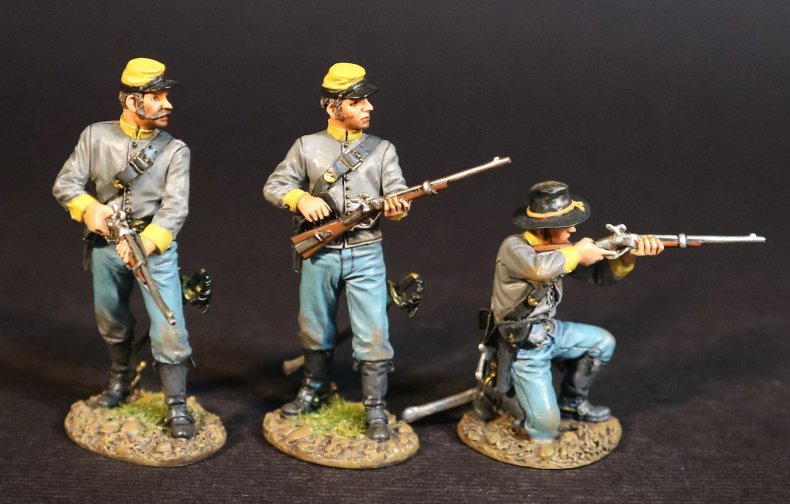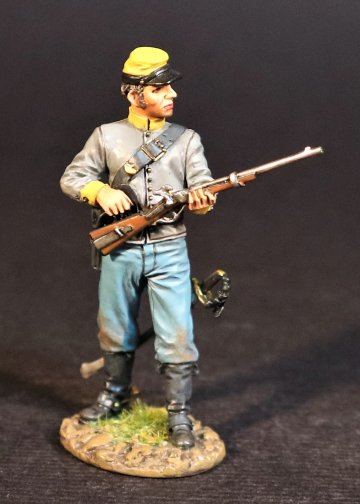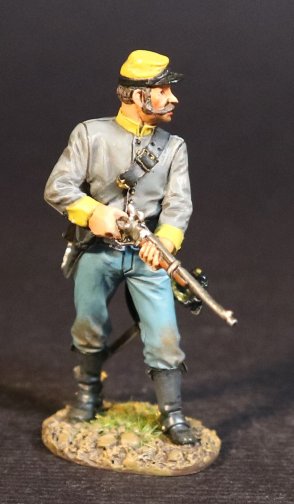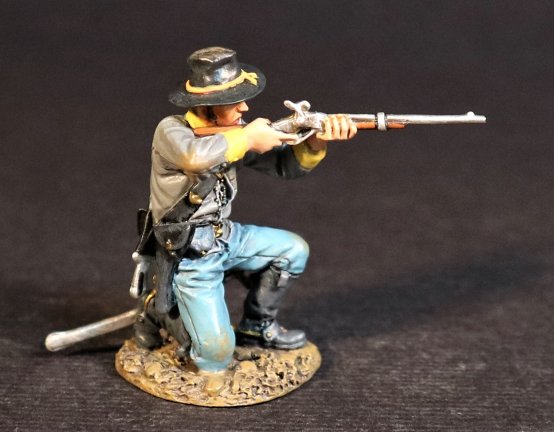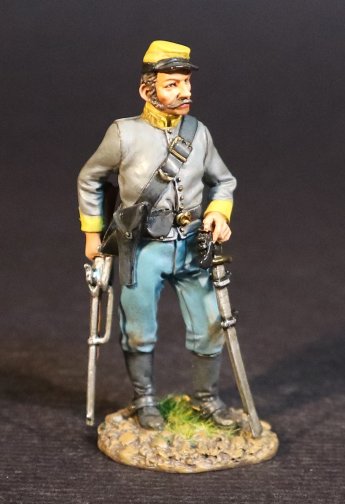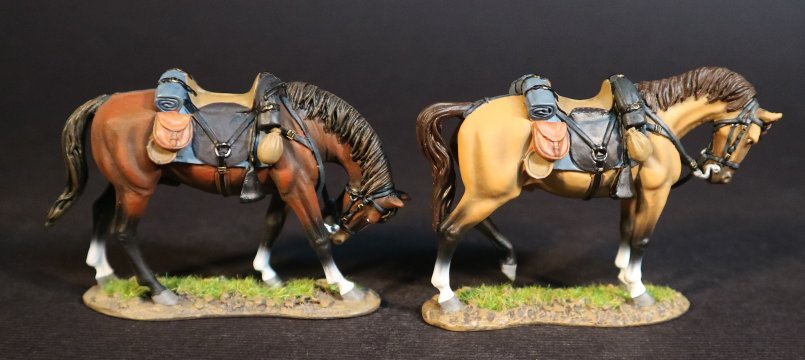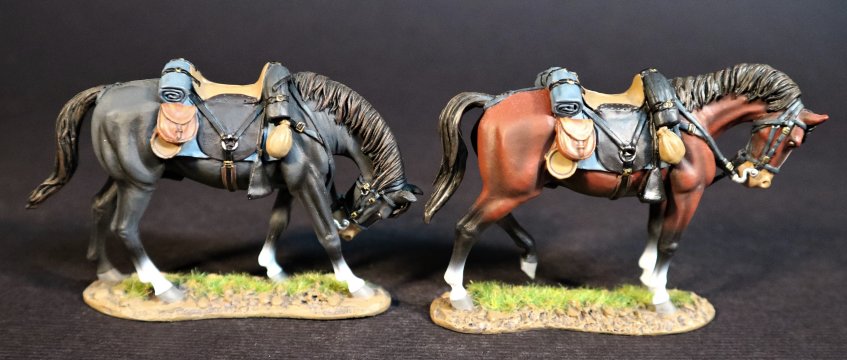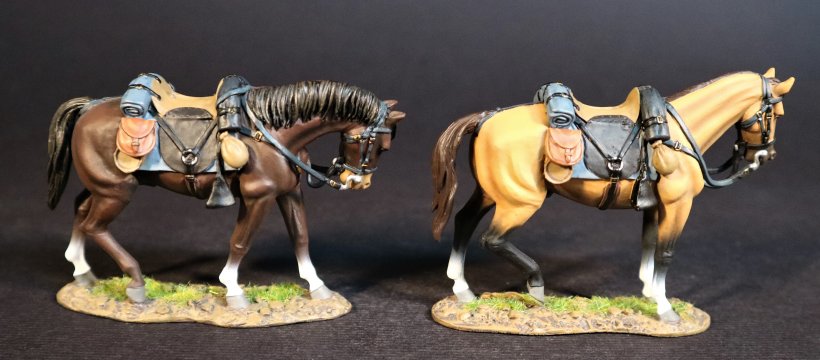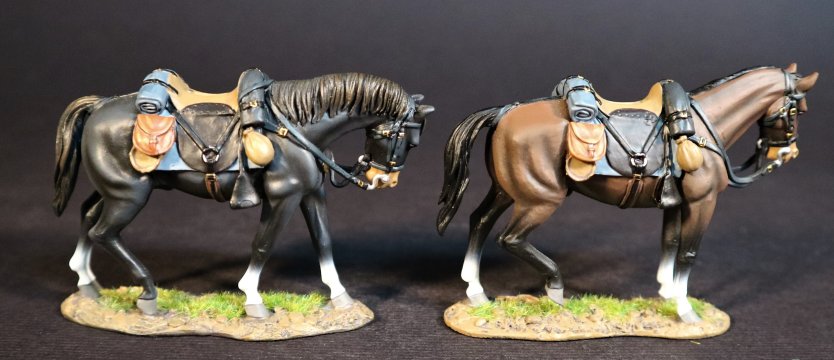- Joined
- Feb 2, 2011
- Messages
- 2,093
NEW RELEASES FOR JULY 2023
AMERICAN CIVIL WAR
THE FIRST BATTLE OF BULL RUN, 1861
During the early action on Henry House Hill, two batteries were ordered to advance to a position near to the Henry House. These were batteries of the regular US army, efficient and well commanded.
Both these batteries had been actively engaged from the very beginning of the battle.

The batteries were commanded by Captain James Ricketts, and Captain Charles Griffin.
It is believed McDowell made a serious tactical error in giving the order for the batteries to advance up the hill. They were told that the 11[SUP]th[/SUP] New York Regiment were on their way to support the advance.
The southern cause was helped by a case of mistaken identity. Colonel Arthur C. Cummings’s 33[SUP]rd[/SUP] Virginia Regiment wore blue uniforms. The Colonel afraid his men would break and run if they were held in their position any longer, ordered them to advance towards the guns of Ricketts and Griffin.
Griffin saw them coming and swung two of his guns round and had them loaded with cannister.
Just as he was about to fire, his superior officer, Major William F. Barry, shouted , “Captain, don’t fire there; those are your battery support.”
“They are Confederates” Griffin shouted back, as certain as the world, they are Confederates.”
But Barry insisted, and the guns were swung back to their original line of fire.
The Virginians, meanwhile marched ever closer, halted and fired a volley.
Griffin told a subsequent Board of Inquiry, “was the last of us, We were all cut down.”
Most of the horses and many of the gunners were killed.
Ricketts was severely wounded. Griffin struggled to save what he could, but Cummings and his Virginians were among them quickly to capture the guns and much ammunition.

ACWART-01
THE AMERICAN CIVIL WAR 1861 - 1865
ARTILLERY LIMBER.
(9 pcs)

A typical “field piece” had an authorized crew of 12 enlisted men constituting a “gun section” led by a sergeant and assisted by one (and sometimes two) corporal. Each section consisted of one “gun,” its “limber” (with one ammunition chest also serving as a seat) and (nominally) six horses (but often only four) to pull it, and a “caisson” (with two ammunition chests/ seats, a spare wheel, tools, and crew baggage) with its own limber pulled by another six horses, and two “spare” horses (when available) tethered to the rear of the caisson. Each “vehicle” was known as a “half section.” Two sections under the command of a second lieutenant constituted a platoon.
While the platoon commander and the two section sergeants (there were no “platoon sergeants” at that time) rode their own assigned horses, six artillerymen rode the three left-side horses in each half section, while the remaining six privates either rode on the three ammunition chests (two to three per chest/seat) or walked alongside. Three platoons (sometimes only two, especially in Confederate units), plus a small headquarters, under a captain, assisted by a first lieutenant and a first sergeant, constituted a “battery.”

ACWART-02
THE AMERICAN CIVIL WAR 1861 - 1865
ARTILLERY LIMBER.
(5 pcs)
THE FIRST BATTLE OF MANASSAS, 1861.
THE ARMY OF THE SHENANDOAH,
1[SUP]st[/SUP] ROCKBRIDGE ARTILLERY
The Seventy men of the 1[SUP]st[/SUP] Rockbridge Artillery were organized in April 1861 by Virginia Military Institute professor John McCausland. William N. Pendleton took command of the battery in late April after McCausland was transferred to command another unit.
The battery was initially equipped with two 6 pounders from VMI and two guns from Richmond.
Pendleton named the first four guns “Mathew”, “Mark”, “Luke” and “John”, after the Apostles.
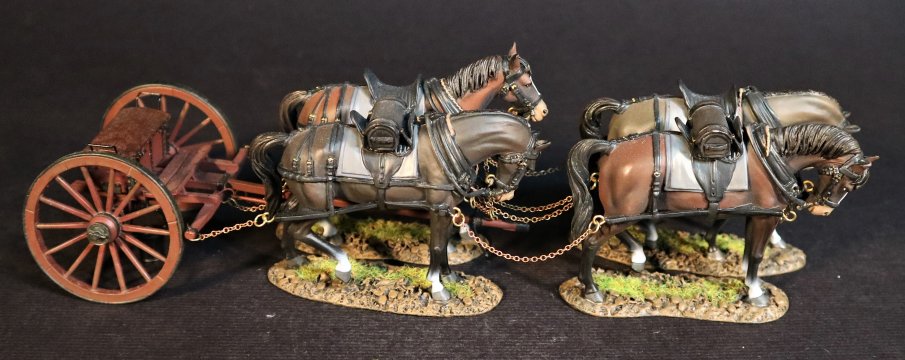
ROCKART-01
THE AMERICAN CIVIL WAR 1861 - 1865
THE FIRST BATTLE OF MANASSAS, 1861.
THE ARMY OF THE SHENANDOAH,
1[SUP]st[/SUP] ROCKBRIDGE ARTILLERY
ROCKBRIDGE ARTILLERY LIMBER.
(9 pcs)
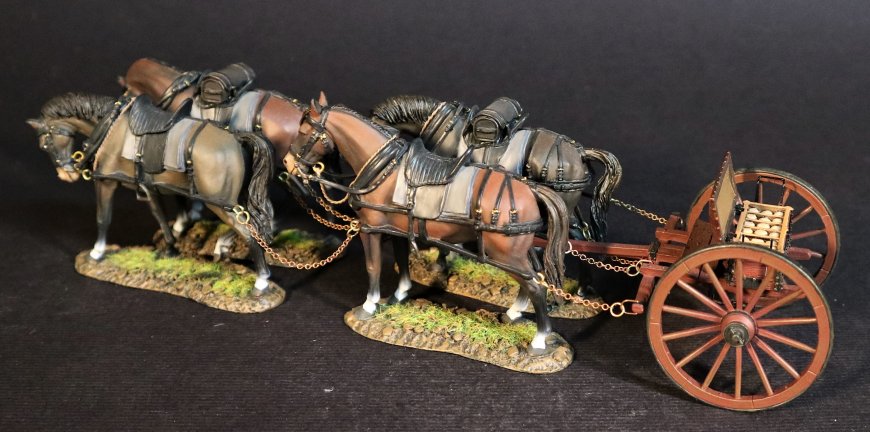
On 18[SUP]th[/SUP] July the battery moved east with the Stonewall Brigade to link up with Confederate general P.G.T. Beauregard’s troops at Manassas Junction. On 21[SUP]st[/SUP] July during the First Battle of Manassas, Pendleton’s Battery was among the Confederate batteries defending the key position of the battle, Henry House Hill. The Battery was visited by Confederate president Jefferson Davis, who had gone to Manassas to watch the battle, during the Union retreat. In the aftermath of the battle, the battery received captured Union cannon.
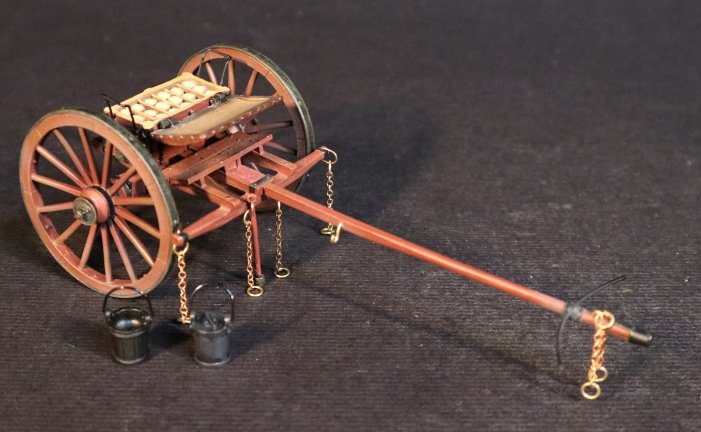
ROCKART-02
THE AMERICAN CIVIL WAR 1861 - 1865
THE FIRST BATTLE OF MANASSAS, 1861.
THE ARMY OF THE SHENANDOAH,
1[SUP]st[/SUP] ROCKBRIDGE ARTILLERY
ROCKBRIDGE ARTILLERY LIMBER.
(5 pcs)
AMERICAN CIVIL WAR
THE FIRST BATTLE OF BULL RUN, 1861
During the early action on Henry House Hill, two batteries were ordered to advance to a position near to the Henry House. These were batteries of the regular US army, efficient and well commanded.
Both these batteries had been actively engaged from the very beginning of the battle.

The batteries were commanded by Captain James Ricketts, and Captain Charles Griffin.
It is believed McDowell made a serious tactical error in giving the order for the batteries to advance up the hill. They were told that the 11[SUP]th[/SUP] New York Regiment were on their way to support the advance.
The southern cause was helped by a case of mistaken identity. Colonel Arthur C. Cummings’s 33[SUP]rd[/SUP] Virginia Regiment wore blue uniforms. The Colonel afraid his men would break and run if they were held in their position any longer, ordered them to advance towards the guns of Ricketts and Griffin.
Griffin saw them coming and swung two of his guns round and had them loaded with cannister.
Just as he was about to fire, his superior officer, Major William F. Barry, shouted , “Captain, don’t fire there; those are your battery support.”
“They are Confederates” Griffin shouted back, as certain as the world, they are Confederates.”
But Barry insisted, and the guns were swung back to their original line of fire.
The Virginians, meanwhile marched ever closer, halted and fired a volley.
Griffin told a subsequent Board of Inquiry, “was the last of us, We were all cut down.”
Most of the horses and many of the gunners were killed.
Ricketts was severely wounded. Griffin struggled to save what he could, but Cummings and his Virginians were among them quickly to capture the guns and much ammunition.

ACWART-01
THE AMERICAN CIVIL WAR 1861 - 1865
ARTILLERY LIMBER.
(9 pcs)

A typical “field piece” had an authorized crew of 12 enlisted men constituting a “gun section” led by a sergeant and assisted by one (and sometimes two) corporal. Each section consisted of one “gun,” its “limber” (with one ammunition chest also serving as a seat) and (nominally) six horses (but often only four) to pull it, and a “caisson” (with two ammunition chests/ seats, a spare wheel, tools, and crew baggage) with its own limber pulled by another six horses, and two “spare” horses (when available) tethered to the rear of the caisson. Each “vehicle” was known as a “half section.” Two sections under the command of a second lieutenant constituted a platoon.
While the platoon commander and the two section sergeants (there were no “platoon sergeants” at that time) rode their own assigned horses, six artillerymen rode the three left-side horses in each half section, while the remaining six privates either rode on the three ammunition chests (two to three per chest/seat) or walked alongside. Three platoons (sometimes only two, especially in Confederate units), plus a small headquarters, under a captain, assisted by a first lieutenant and a first sergeant, constituted a “battery.”

ACWART-02
THE AMERICAN CIVIL WAR 1861 - 1865
ARTILLERY LIMBER.
(5 pcs)
THE FIRST BATTLE OF MANASSAS, 1861.
THE ARMY OF THE SHENANDOAH,
1[SUP]st[/SUP] ROCKBRIDGE ARTILLERY
The Seventy men of the 1[SUP]st[/SUP] Rockbridge Artillery were organized in April 1861 by Virginia Military Institute professor John McCausland. William N. Pendleton took command of the battery in late April after McCausland was transferred to command another unit.
The battery was initially equipped with two 6 pounders from VMI and two guns from Richmond.
Pendleton named the first four guns “Mathew”, “Mark”, “Luke” and “John”, after the Apostles.

ROCKART-01
THE AMERICAN CIVIL WAR 1861 - 1865
THE FIRST BATTLE OF MANASSAS, 1861.
THE ARMY OF THE SHENANDOAH,
1[SUP]st[/SUP] ROCKBRIDGE ARTILLERY
ROCKBRIDGE ARTILLERY LIMBER.
(9 pcs)

On 18[SUP]th[/SUP] July the battery moved east with the Stonewall Brigade to link up with Confederate general P.G.T. Beauregard’s troops at Manassas Junction. On 21[SUP]st[/SUP] July during the First Battle of Manassas, Pendleton’s Battery was among the Confederate batteries defending the key position of the battle, Henry House Hill. The Battery was visited by Confederate president Jefferson Davis, who had gone to Manassas to watch the battle, during the Union retreat. In the aftermath of the battle, the battery received captured Union cannon.

ROCKART-02
THE AMERICAN CIVIL WAR 1861 - 1865
THE FIRST BATTLE OF MANASSAS, 1861.
THE ARMY OF THE SHENANDOAH,
1[SUP]st[/SUP] ROCKBRIDGE ARTILLERY
ROCKBRIDGE ARTILLERY LIMBER.
(5 pcs)



